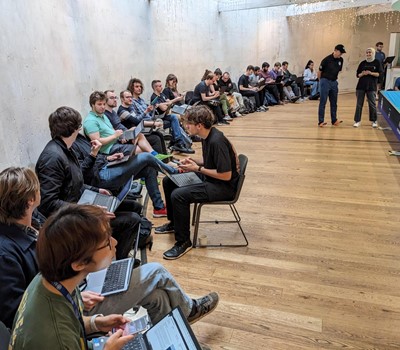August 11 2021

Featured Image Source: Pixabay
In recent years, legislative requirements and customer demands have transformed the Automotive Industry into an environment characterised by rapid technological advancements perpetually accelerated by each innovation cycle. Every succession benefited the newest generation of vehicles through improved efficiency and safety while increasing support for environmental concerns as well as social and economic development. The current progress was enabled by well-established engineering knowledge combined with a series of development tools, amidst which simulation software is considered as one of the most essential. Consequently, research targeting simulation tools represents a fundamental prerequisite for increasing support for engineers dealing with the complex environment and further reducing inefficiencies part of the vehicle development process.
AVL has been one of the most important supporters of simulation technologies since their early beginnings. One of their latest contributions was marked by the 10th AVL Virtual International Simulation Conference, a central event targeting the latest trends and technological advancements for vehicle and powertrain simulation. The conference brought together hundreds of researchers and technical experts from across the globe to present the challenges and benefits of employing a series of simulation tools throughout the development process. For three days, an interactive virtual platform provided access to over 70 technical presentations, as well as roundtable discussions, keynote speeches and the opportunity to directly chat with the technical experts. The non-exhaustive list of topics targeted best practices for simulating a wide array of powertrain systems, ranging from internal combustion engines to battery and fuel cell systems, as well as the development of ADAS functions and digital twins for concept vehicles.
One of the most emergent areas of innovation featured by the event targeted the complete virtualisation of prototype vehicles throughout their development process. In the early stages, this approach allows a timely optimisation of the prototype as well as the opportunity to benchmark the concept against competitor vehicles. As hardware becomes progressively more available, the virtual twin allows a seamless transition between the real and virtual components, hence reducing integration efforts and enabling more representative testing procedures. Any data generated is then used to refine numerical models employed during later stages of development such as model-based calibration and function validation and verification. While this concept workflow significantly reduces cost and effort, it also presents as highly challenging to make readily available due to its requirements for flawless management of simulation and testing data as well as compatibility between platforms effective in providing suitable models throughout the process.
From a component-level perspective, the complete virtualisation of vehicle prototypes generally requires only simple models in the very early phases. However, detailed virtualisation of the vehicle capable of supporting the second half of the development cycle significantly increases the demand for technological advancements in producing fast and accurate models. One of the most relevant examples highlighted by the growing levels of electrification is represented by the battery system. During the first stages of development, only high-level technical specifications are being adjusted for the optimisation of various vehicle KPIs such as range, performance, and handling, while later stages require advanced battery models for the benefit of tasks such as validation of charging profiles, thermal management or ensuring performance levels for aged cells. Consequently, engineers are continuously challenged to formulate new model structures which accurately depict the internal states, mechanisms and interactions while demonstrating fast computation and global validity as well as effective automated parametrisation procedures for the models, capable of maximising information captured by a wide variety of datasets.
The benefits and challenges facing numerical simulations summarised by this article represent just a small sample of the unique learning opportunity provided for students and experts alike by this edition of AVL’s Virtual International Simulation Conference. The innovative ideas and perspectives promote further advancements for simulation tools helping mobility solutions to become safer and more efficient as well as increasingly sustainable for the environment. Furthermore, the event presented an invaluable opportunity to connect within an international network of technical experts and exchange viewpoints and ideas. We are looking forwards to the next edition currently scheduled to take place in Graz, Austria in the summer of 2023.

28 February 2024

18 January 2024

29 November 2023

13 November 2023

© Copyright 2024 AAPS CDT, Centre for Doctoral Training in Advanced Automotive Propulsion Systems at the University of Bath